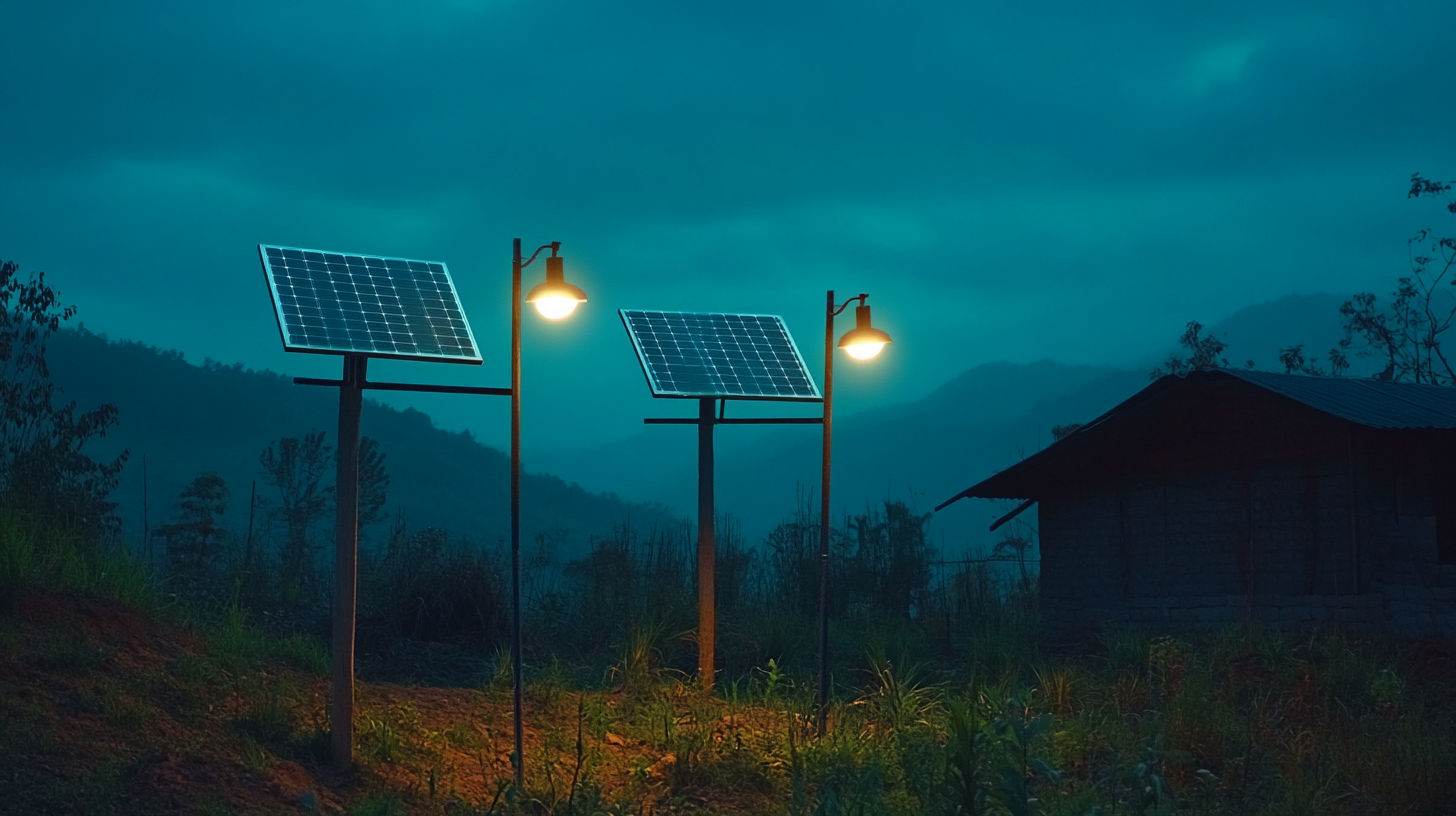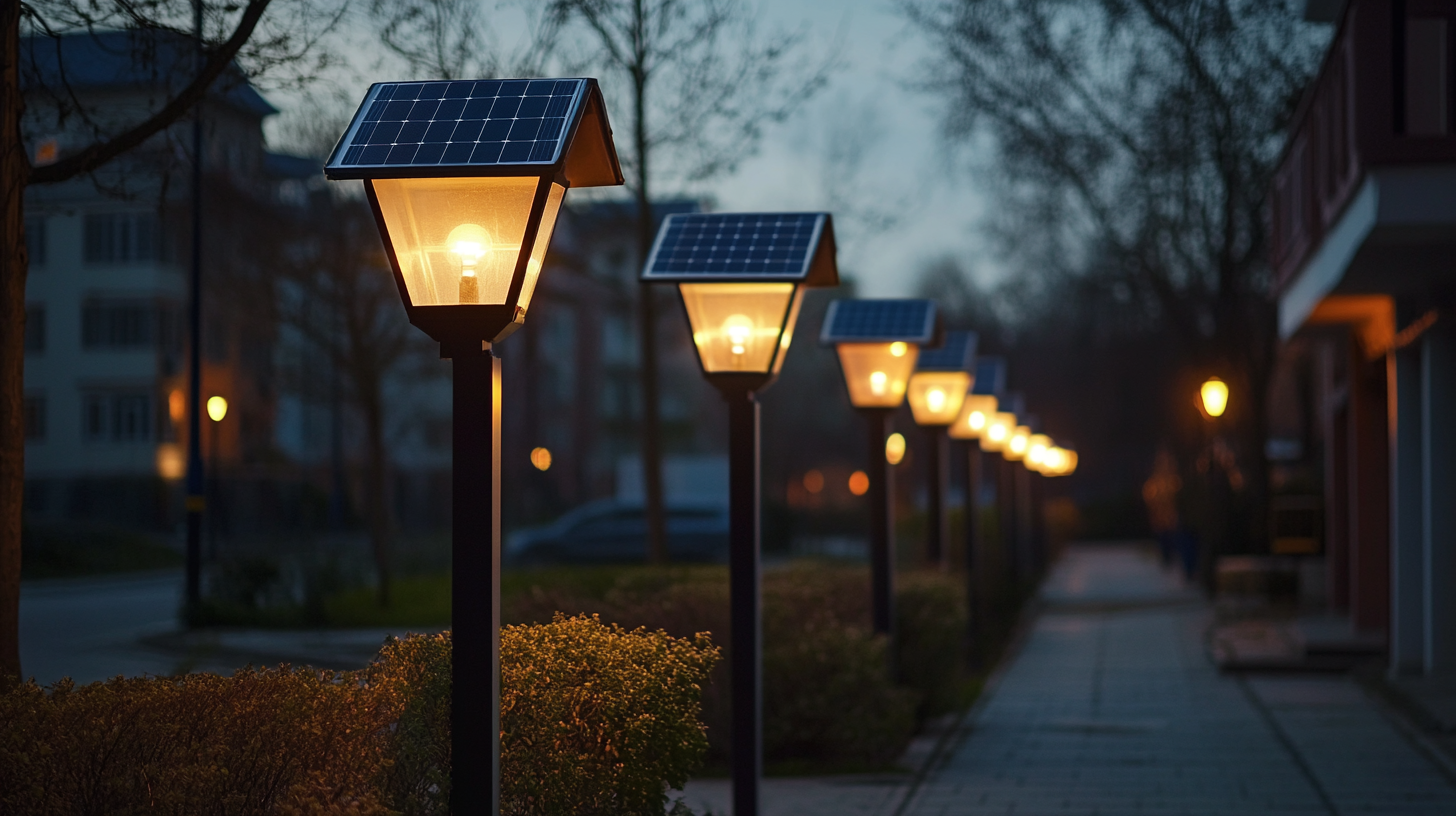Exploring the Advantages of Solar Powered Lamps over Traditional Lighting Solutions
As the world increasingly turns towards sustainable solutions, the adoption of solar powered lamps has gained significant momentum, offering an eco-friendly alternative to traditional lighting systems. According to a report by the International Renewable Energy Agency (IRENA), the global solar market has witnessed a remarkable growth, with solar lighting solutions projected to reach a cumulative capacity of over 1,500 MW by 2024. This shift not only underscores the growing demand for renewable energy sources but also highlights the practical advantages that solar powered lamps offer, particularly in off-grid and rural areas where access to conventional electricity remains a challenge.
Moreover, a study published by the Global Lighting Association indicates that solar powered lamps can reduce energy costs by up to 75% compared to their conventional counterparts. These innovative lighting solutions operate independently from the electrical grid, enabling users to harness the power of the sun for their illumination needs. In addition to cost savings, solar powered lamps contribute to reducing carbon emissions and enhancing safety in outdoor environments. This blog will delve into the myriad advantages of solar powered lamps, exploring how they are redefining lighting opportunities for both urban and remote communities alike.

Benefits of Using Solar Powered Lamps for Sustainable Living
Solar powered lamps present a compelling case for sustainable living, offering numerous benefits that traditional lighting solutions simply cannot match. With more than 1.6 billion people globally lacking access to electricity, solar lamps serve as an innovative alternative, promoting both energy independence and ecological responsibility. According to a report by the International Renewable Energy Agency (IRENA), solar lighting can reduce reliance on fossil fuels, potentially avoiding up to 1.4 gigatons of carbon dioxide emissions annually. This statistic underscores the significant environmental advantages of adopting solar technology in our daily lives. Furthermore, the efficiency of solar lamps has improved dramatically in recent years. A 2021 study by the Global Off-Grid Lighting Association revealed that advancements in solar panel technology have resulted in a 20% increase in energy conversion rates, allowing these lamps to harness more sunlight than ever before. This translates to longer usage times and enhanced performance, making solar lamps not only eco-friendly but also practical for various applications, from urban settings to remote rural areas. A significant economic aspect of solar lamps lies in their cost-effectiveness. Once installed, they require minimal maintenance and no ongoing electricity costs, leading to substantial savings over time. The World Bank estimates that investing in solar technology can yield a savings of about $300 annually for households that previously relied on kerosene lamps. This combination of environmental sustainability and economic savings positions solar powered lamps as an essential component of a greener, more sustainable future.

Comparing Energy Efficiency: Solar Lamps vs. Traditional Lighting
When examining the energy efficiency of solar lamps versus traditional lighting solutions, clear advantages emerge for solar-powered options. According to a report from the International Renewable Energy Agency (IRENA), lighting accounts for about 15% of global electricity consumption. By utilizing solar lamps, households and businesses can significantly reduce their dependency on grid electricity, which is often generated through fossil fuels. This transition not only lowers energy bills but also minimizes carbon footprints.
In terms of energy efficiency, solar lamps operate using photovoltaic cells that convert sunlight directly into electricity. This process reduces energy losses associated with conventional lighting, which typically involves several conversion steps—from power generation to transmission and finally to the end use. A study from the U.S. Department of Energy indicates that solar lighting systems can achieve efficiencies exceeding 22%, while traditional incandescent bulbs typically range around 10-17%, and even compact fluorescent lamps (CFLs) only marginally improve with efficiencies up to 25%.
Moreover, the installation and maintenance costs of solar lamps are often lower in the long run. While the initial investment for solar lighting systems can be higher, the absence of ongoing electricity costs leads to substantial savings over time. The Global Solar Council notes that the cost of solar technology has decreased by roughly 89% since 2010, making solar lamps not only a greener alternative but also an economically viable one for consumers looking to optimize energy efficiency.

Cost Savings: How Solar Lamps Reduce Long-Term Expenses
The rise of solar-powered lamps heralds a significant shift in our approach to outdoor and indoor lighting solutions. One of the most compelling advantages of these lamps is their ability to significantly reduce long-term expenses. Unlike traditional lighting, which relies on a constant supply of electricity, solar lamps harness energy from the sun, allowing users to minimize their utility bills. Over time, these savings can accumulate to a substantial amount, particularly in areas with high electricity costs.
In addition to reducing energy costs, solar lamps often come with minimal maintenance expenses. Once installed, they require very little upkeep compared to conventional lighting systems that may need regular bulb replacements or electrical repairs. This not only saves money but also reduces the hassle associated with managing traditional lighting, enabling users to enjoy a hassle-free lighting experience. Moreover, many solar lamps are designed for durability and can withstand various weather conditions, further enhancing their long-term value.
Furthermore, the initial investment in solar lamps is increasingly becoming more budget-friendly, thanks to advancements in technology and manufacturing. With prices steadily decreasing, homeowners and businesses alike can invest in solar lighting solutions that contribute to long-term savings without breaking the bank. As awareness grows regarding the financial benefits of solar lamps, more individuals are likely to make the switch, reaping not only economic advantages but also contributing to a more sustainable future.

Eco-Friendly Impact of Solar Lighting on the Environment
The eco-friendly impact of solar lighting is increasingly gaining recognition, especially in the context of the global shift towards sustainable living. Solar powered lamps significantly reduce carbon footprints by utilizing renewable energy, thus contributing to mitigating climate change. According to recent market forecasts, the global market for solar lighting is expected to witness a compound annual growth rate (CAGR) of 5.9% from 2023 to 2033, signifying a growing trend in adopting greener lighting solutions.
Moreover, solar lamps play a pivotal role in enhancing environmental benefits by decreasing reliance on fossil fuels and reducing greenhouse gas emissions. In recent developments, initiatives aimed at promoting sustainable practices, such as the "Belt and Road" green development opinions, highlight the importance of ecological conservation in international cooperatives. From eco-friendly burial practices to the promotion of low-carbon projects in urban areas, this broader eco-conscious movement aligns well with the rising trend of solar lighting, underscoring the potential of solar technology to foster environmental sustainability.
By integrating solar powered lamps into everyday life, communities can contribute to cleaner energy consumption and reduced air pollution, setting a precedence for future ecological innovations. As the push for green living intensifies, solar lighting presents an accessible and impactful option that not only enhances aesthetics but also aligns with the global imperative for environmental stewardship.
Versatile Applications and Design Options for Solar Lamps
Solar-powered lamps are rapidly gaining traction across various sectors due to their versatility and innovative design options. According to a report by MarketsandMarkets, the global solar lighting market is projected to reach $18.7 billion by 2026, growing at a CAGR of 20.6% from 2021. This surge is largely attributed to the increasing demand for energy-efficient lighting solutions and a growing emphasis on sustainability.
One of the most remarkable aspects of solar lamps is their adaptability. Solar lights can be used in an array of environments, from residential gardens to commercial properties and public spaces. They come in diverse styles, including decorative lanterns, path lights, and floodlights. A survey conducted by Grand View Research notes that outdoor solar lights are becoming increasingly popular among homeowners, with 40% of respondents stating that these lamps enhance their outdoor aesthetics while reducing electricity costs.
The design options for solar lamps continue to evolve, featuring advancements such as integrated LED technology and smart features. Some models are equipped with motion sensors and remote controls, allowing for customized and efficient use. A report from Transparency Market Research indicates that innovations in solar lamp technology are expected to drive significant market growth as efficiency and functionality improve, making these sustainable lighting solutions not only practical but also appealing to a broader range of consumers.
